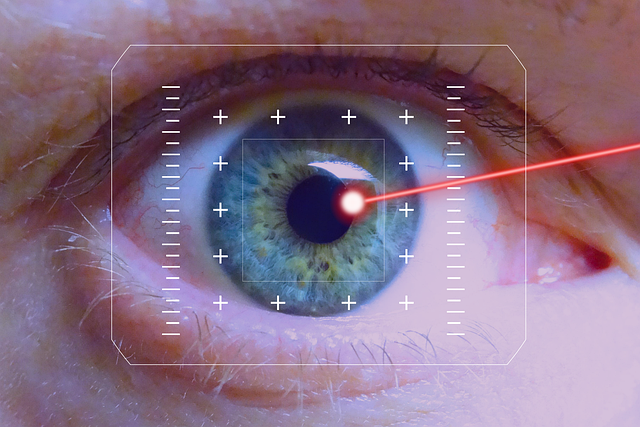In the evolving world of display technology, the pursuit of pixel-perfect clarity has become a cornerstone of modern visual experiences. Whether it is the cinematic immersion of a premium television or the crisp detail required by a professional graphic designer, the concept of image correction plays a pivotal role. By addressing distortions, color inaccuracies, and luminance inconsistencies, image correction bridges the gap between raw sensor data and the viewer’s perception, ensuring that every frame is rendered with fidelity and artistic intent.
The Science Behind Image Correction
Image correction encompasses a suite of algorithms and hardware interventions that refine the displayed image. At its core are processes such as gamma correction, which aligns the non-linear relationship between input signal and luminance output, and tone mapping, which compresses high dynamic range signals into the manageable range of consumer displays. Additionally, spatial filtering techniques, like anti‑aliasing and edge sharpening, smooth pixel boundaries and mitigate jagged artifacts that arise from low‑resolution sampling.
- Gamma correction ensures perceptual linearity across varying brightness levels.
- Tone mapping preserves detail in both shadows and highlights during HDR playback.
- Spatial filtering reduces aliasing and enhances perceived sharpness.
Color Management: From Rec. 709 to Rec. 2020
Color accuracy is as critical as luminance precision. Standard-definition televisions historically adhered to Rec. 709, a color space tailored to the capabilities of CRT panels. Modern 4K and 8K displays, however, are often calibrated against broader gamuts like DCI‑P3 or Rec. 2020. Image correction tools now include gamut mapping algorithms that translate content from its native color space into the display’s supported gamut while preserving relative luminance and hue integrity. This process reduces banding and maintains natural color gradients, especially in high‑contrast scenes.
“A calibrated monitor is a canvas that respects the artist’s palette,” says a senior color scientist in a leading display company.
Hardware Acceleration: The Role of Local Dimming and HDR Processing
Beyond software, physical components in high‑resolution TVs actively contribute to image correction. Local dimming panels, equipped with hundreds or thousands of dimming zones, adjust backlight intensity on a per‑region basis. This technique sharpens contrast ratios and reduces blooming around bright subjects. Coupled with hardware‑accelerated HDR processors, these panels can perform real‑time luminance scaling, ensuring that peak brightness levels do not compromise detail in adjacent shadow areas.
Pixel Mapping and Display Calibration
Pixel mapping addresses non‑uniformities caused by manufacturing variances or aging. By creating a lookup table that adjusts the voltage or color output for each individual pixel, manufacturers can correct for hot spots, cold spots, and color drift. Professional calibration tools, such as spectrophotometers and reference monitors, measure the display’s response and generate precise correction profiles. These profiles are then applied via display firmware or external calibration software, guaranteeing consistent image quality over time.
- Measure pixel response curves using a calibrated light source.
- Generate a correction LUT that maps input values to desired outputs.
- Upload the LUT to the display’s internal memory or a connected calibration device.
Software Ecosystems: From GPU Drivers to Media Players
Image correction is not confined to the display; the entire signal chain influences final output. Modern GPUs incorporate extensive color management features, offering real‑time gamma and hue adjustments. Likewise, media players like VLC or proprietary HDR frameworks incorporate tone‑mapping algorithms that adapt content to the monitor’s capabilities. When these layers collaborate seamlessly, the viewer experiences smooth transitions between standard dynamic range (SDR) and high dynamic range (HDR) without perceptible shifts in brightness or color.
Consumer vs Professional Use Cases
While home entertainment systems focus on a balanced, cinematic look, professional environments demand absolute precision. Graphic designers, colorists, and video editors rely on monitors that deliver sub‑1% color accuracy and consistent luminance across a wide viewing angle. Image correction tools in these contexts include hardware‑level calibration routines, custom LUTs, and support for wide color gamuts. Conversely, consumer TVs prioritize a broad appeal, employing aggressive sharpening and contrast enhancement to satisfy a wide audience, sometimes at the expense of absolute fidelity.
The Future: Machine Learning and Adaptive Correction
Recent advancements in machine learning are poised to revolutionize image correction. Neural networks trained on large datasets can predict and rectify artifacts in real time, tailoring correction parameters to content type—be it gaming, sports, or cinematic footage. Adaptive correction algorithms monitor ambient light and viewer position, dynamically adjusting brightness, contrast, and color balance to maintain optimal visual comfort. These intelligent systems promise displays that learn from user behavior, offering personalized visual experiences without manual intervention.
Environmental Considerations and Energy Efficiency
Image correction also intersects with sustainability. Efficient backlight control, through techniques like local dimming, reduces power consumption by dimming non‑essential regions. Moreover, accurate color and luminance calibration diminishes the need for over‑driven displays, extending hardware longevity. Manufacturers are increasingly adopting eco‑friendly standards, such as Energy Star compliance, while still delivering high‑quality visual output. Users can contribute by calibrating their displays once and maintaining proper ambient lighting to reduce perceived brightness adjustments.
Conclusion: The Symbiosis of Technology and Perception
Image correction is the invisible hand that shapes modern visual storytelling. From the subtle refinement of gamma curves to the bold contrasts enabled by HDR and local dimming, each layer of correction ensures that what the creator intends is faithfully rendered to the viewer. As display technologies continue to push boundaries—introducing higher pixel densities, wider color gamuts, and intelligent adaptive systems—the principles of image correction will remain foundational. They ensure that, regardless of the medium, the picture on the screen remains a true reflection of the world, a world where clarity and authenticity converge.




